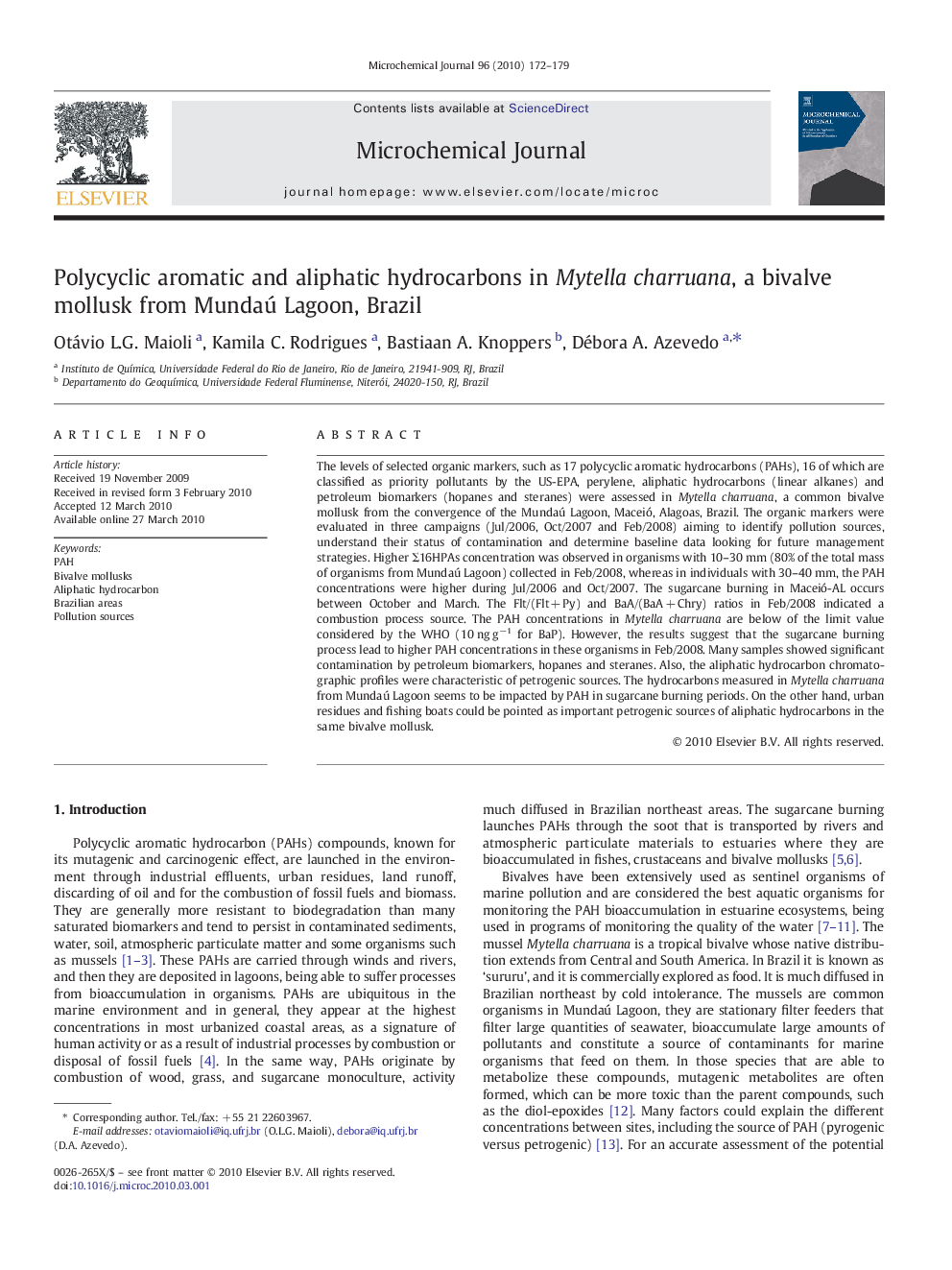| Article ID | Journal | Published Year | Pages | File Type |
|---|---|---|---|---|
| 1227845 | Microchemical Journal | 2010 | 8 Pages |
The levels of selected organic markers, such as 17 polycyclic aromatic hydrocarbons (PAHs), 16 of which are classified as priority pollutants by the US-EPA, perylene, aliphatic hydrocarbons (linear alkanes) and petroleum biomarkers (hopanes and steranes) were assessed in Mytella charruana, a common bivalve mollusk from the convergence of the Mundaú Lagoon, Maceió, Alagoas, Brazil. The organic markers were evaluated in three campaigns (Jul/2006, Oct/2007 and Feb/2008) aiming to identify pollution sources, understand their status of contamination and determine baseline data looking for future management strategies. Higher Σ16HPAs concentration was observed in organisms with 10–30 mm (80% of the total mass of organisms from Mundaú Lagoon) collected in Feb/2008, whereas in individuals with 30–40 mm, the PAH concentrations were higher during Jul/2006 and Oct/2007. The sugarcane burning in Maceió-AL occurs between October and March. The Flt/(Flt + Py) and BaA/(BaA + Chry) ratios in Feb/2008 indicated a combustion process source. The PAH concentrations in Mytella charruana are below of the limit value considered by the WHO (10 ng g−1 for BaP). However, the results suggest that the sugarcane burning process lead to higher PAH concentrations in these organisms in Feb/2008. Many samples showed significant contamination by petroleum biomarkers, hopanes and steranes. Also, the aliphatic hydrocarbon chromatographic profiles were characteristic of petrogenic sources. The hydrocarbons measured in Mytella charruana from Mundaú Lagoon seems to be impacted by PAH in sugarcane burning periods. On the other hand, urban residues and fishing boats could be pointed as important petrogenic sources of aliphatic hydrocarbons in the same bivalve mollusk.
